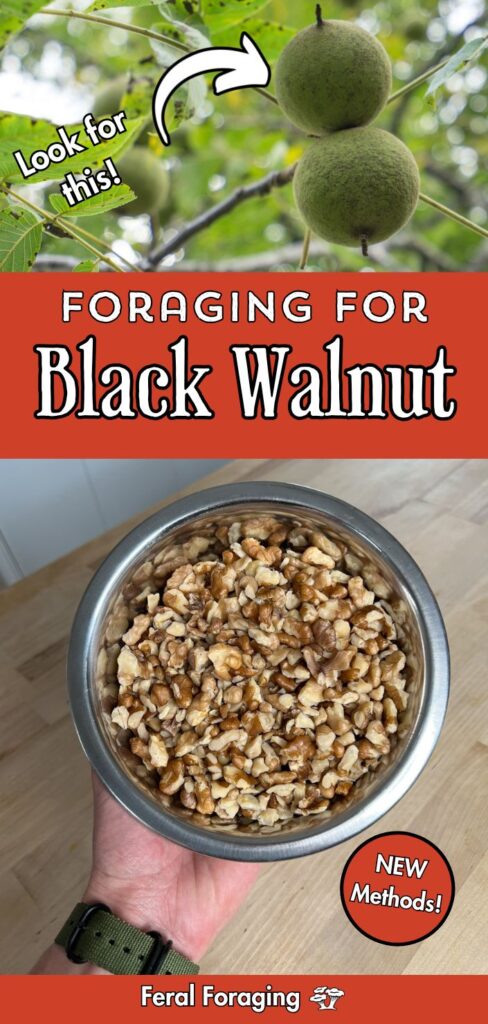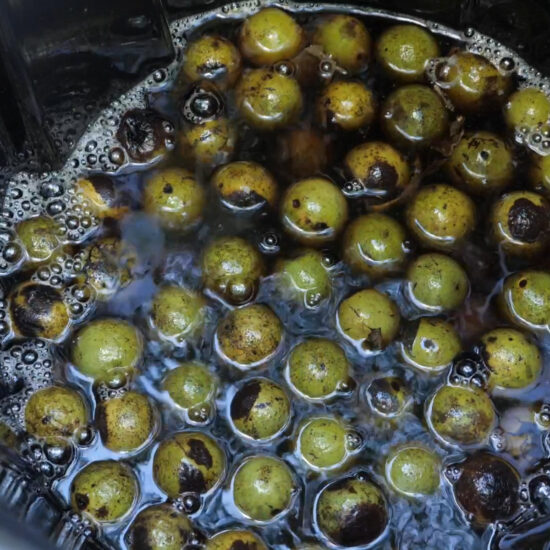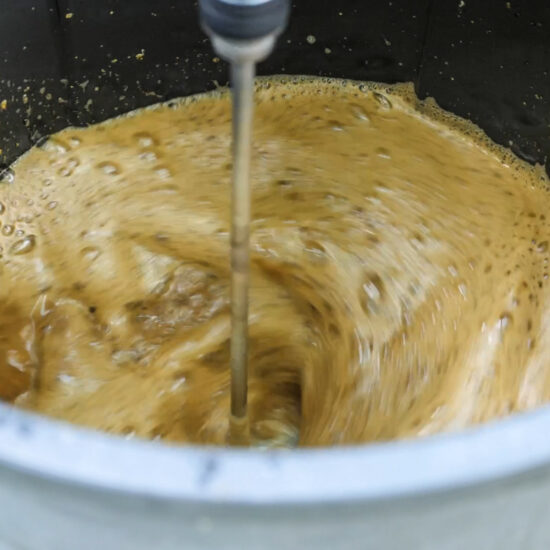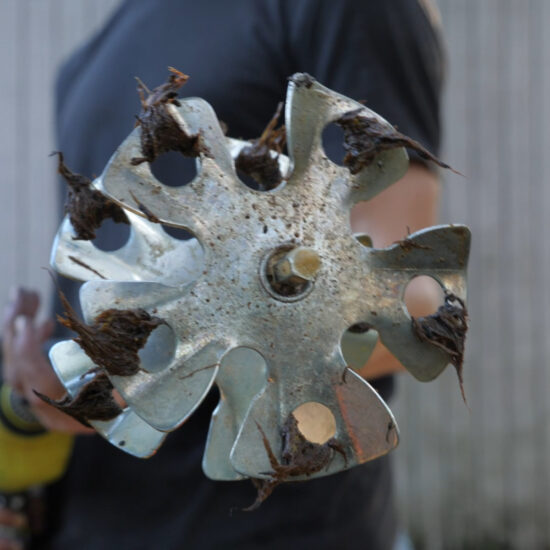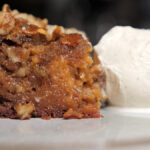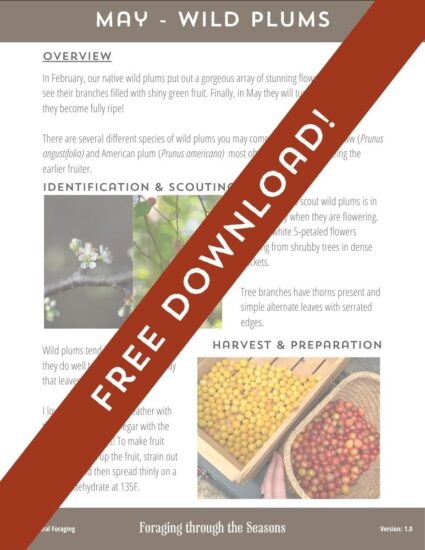Black walnuts are one of the most abundant and widespread tree nuts in North America. They are easily recognized by their large, round green fruits, which fall to the ground in the Autumn.
In this article, I’ll teach you everything you need to know about foraging for the incredible black walnut, especially cleaning and cracking them!
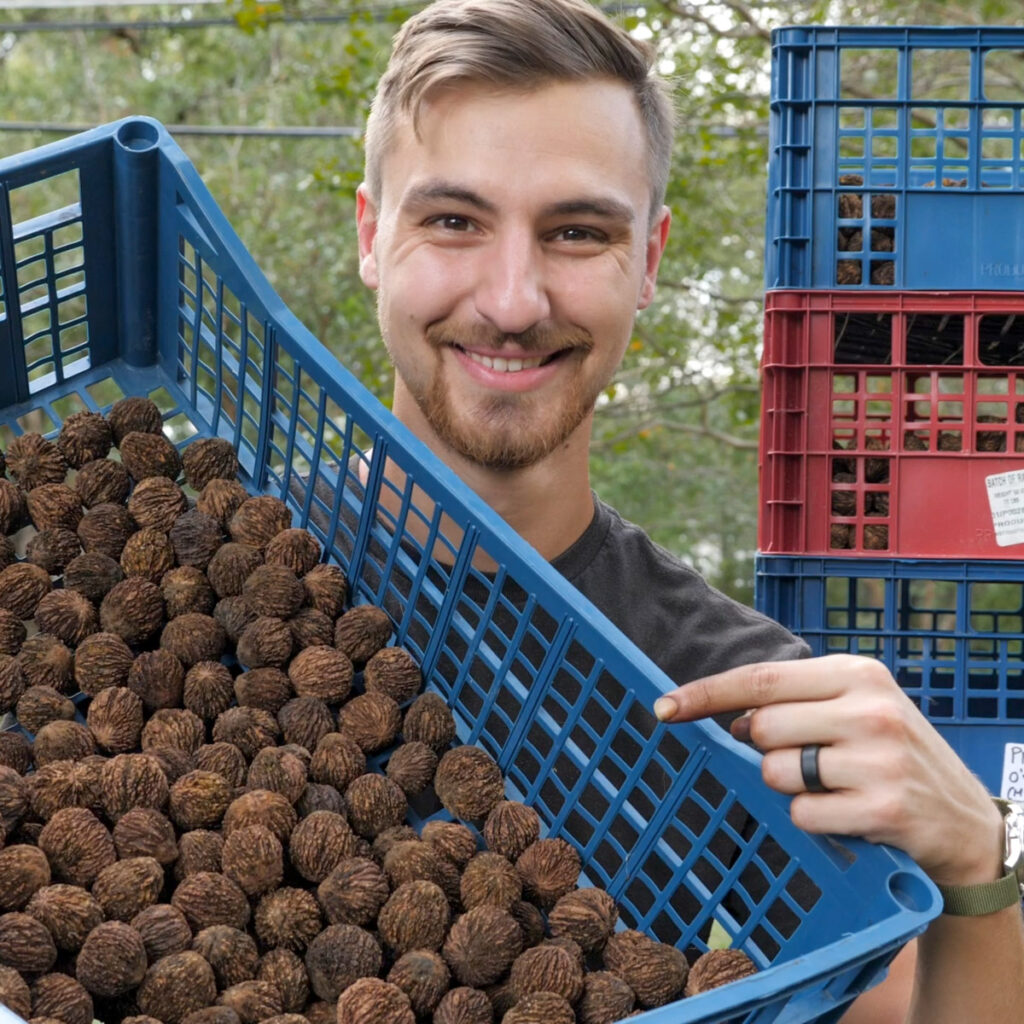
Are Black Walnuts Edible?
Black walnuts are not only perfectly edible but also extremely nutritious, loaded with vital nutrients, minerals, and calories!
Some people don’t prefer the flavor of black walnuts, but others (like me) relish them!
If you don’t like the flavor of black walnut, here are some things to try:
- Let your walnuts cure before eating them; this often mellows the flavor.
- Process your walnuts properly; if left in their inky husks for too long, this can strengthen the flavor people don’t like.
- Use black walnuts in desserts. Their bold flavor works particularly well in desserts, such as ice cream, brownies, cookies, and puddings.
- Do NOT dry roast them! I cannot emphasize this enough: dry roasting black walnuts often results in overt bitter flavors that are not enjoyable.
- Eat more black walnuts; it sounds strange, but this is an acquired taste. I didn’t like black walnuts at first, but I kept eating them, and now I love the flavor!
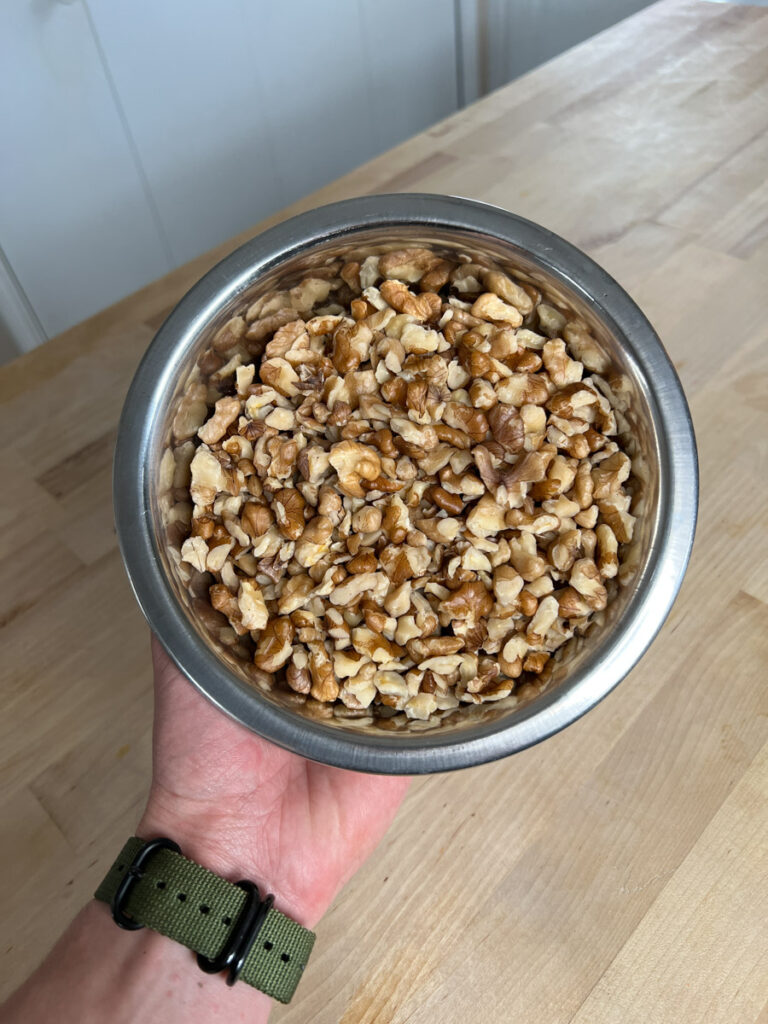
Identification
Black walnuts are easy to identify, especially by their distinctive nuts that fall to the ground in Autumn.
Overview:
- Bark: Dark, deeply furrowed, thick bark that forms rough, interlocking ridges
- Leaves: Alternate, compound leaves, 1-2 feet long, with 11-23 leaflets usually lacking a terminal leaflet. Leaflets are lanceolate, finely toothed, and have a slightly hairy underside
- Flowers: Male and female flowers are separate but on the same tree, with male flowers in drooping catkins and female flowers in short spikes
- Fruit: Large, round, green husks enclosing a hard, brown-black nut with a deeply grooved surface
- Growth Habit: Typically grows 70-100 feet tall, with a large, spreading canopy
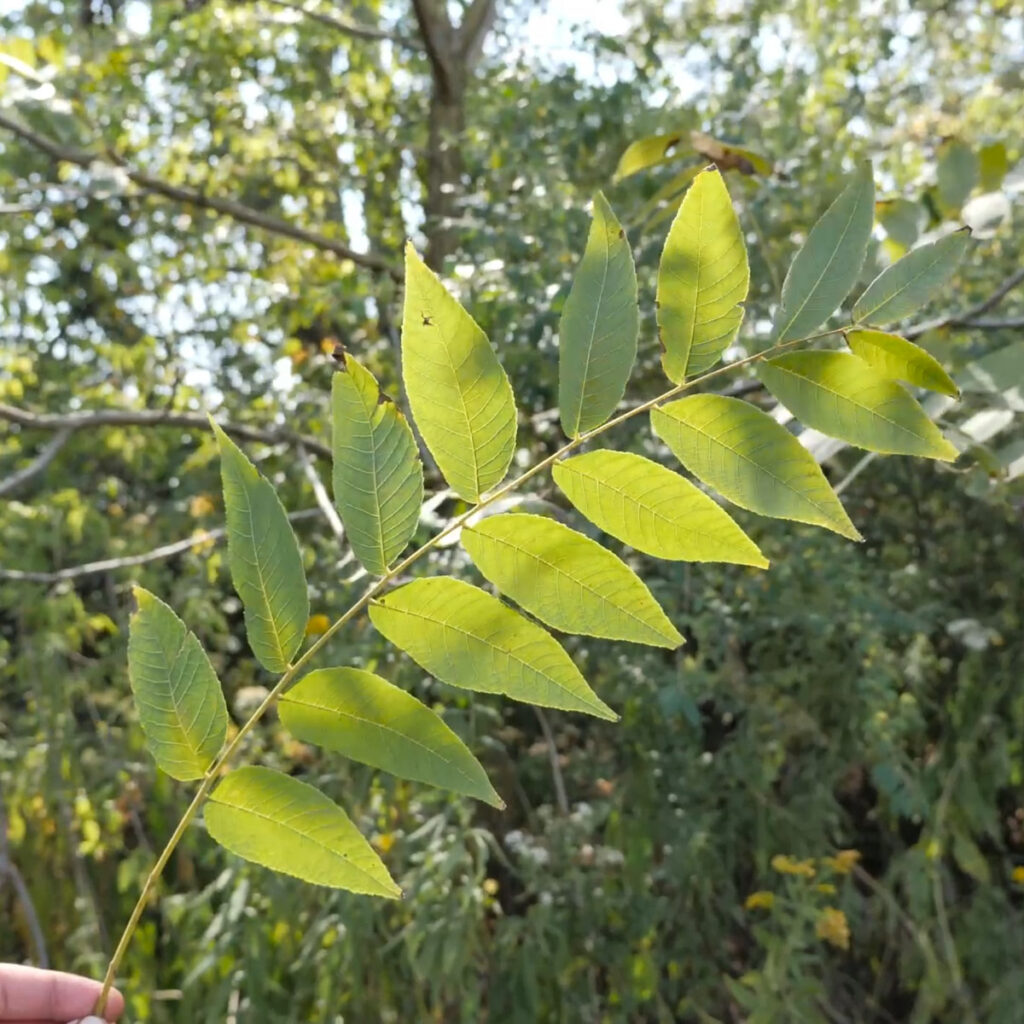
Lookalikes
The first three lookalikes have fruit that could potentially be mistaken for black walnut fruit. The final one, Tree of Heaven, doesn’t have similar fruit at all, but the leaves may be similar.
Butternut vs Black Walnut
Butternut (Juglans cinerea) looks quite similar to black walnut and is extremely closely related. All we need is the nuts to distinguish them.
- Nuts: Black walnut has large spherical nuts, whereas butternut has smaller and more elongated football-shaped nuts.
Butternuts can be gathered, processed, and eaten in exactly the same way as I show in this article for black walnut.

Hickory vs Black Walnut
Hickory (Carya) is a slightly more distant cousin to black walnut, but in the same family, Juglandaceae. The easiest way to distinguish them again is the nuts, particularly the husks.
- Nut Husk: Hickory husks are thick and have distinct seams, dividing them into four sections that split cleanly when ripe. Black walnut husks lack distinct seams, do not split naturally, and are harder to remove.

Buckeye vs Black Walnut
At first glance, the fruit of Buckeye (Aesculus) can appear somewhat similar to black walnut, but upon closer observation, they are very different. The leaves also have a different structure.
- Nuts: Buckeye trees have thin nut husks that usually contain multiple smooth chestnut-like nuts. Black walnuts, on the other hand, have far thicker husks that contain a single rough-textured nut.
- Leaf Type: Buckeye trees have compound leaves with 5-7 leaflets arranged in a palm-like (palmate) structure. Black walnut trees have compound leaves with 15-23 leaflets arranged in a feather-like (pinnate) structure.
- Scent: Buckeye husks have no distinct smell, while black walnut husks have a strong, earthy, citrus-like aroma when crushed.
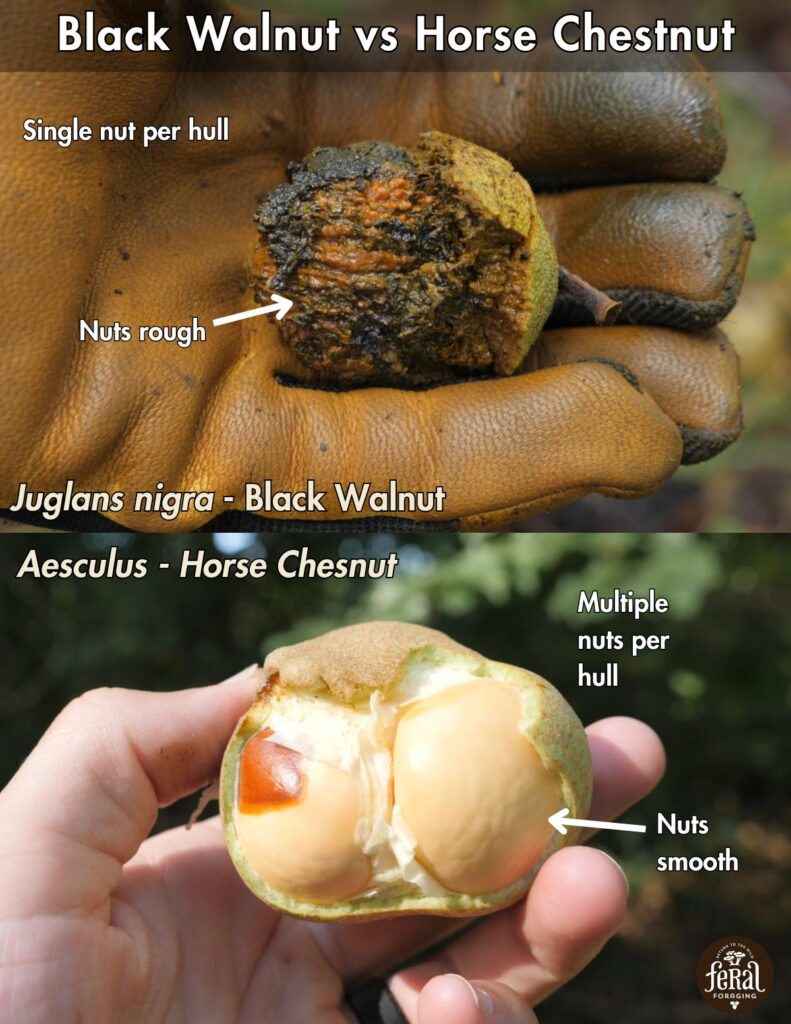
Tree of Heaven vs Black Walnut
Tree of Heaven (Ailanthus altissima) leaves can look similar to black walnut leaves, but multiple distinguishing details make it easy to tell them apart.
- Leaf Shape: Tree of Heaven leaflets are smooth-edged overall, with a single notch at the base. Black Walnut leaflets are finely serrated along the entire edge.
- Aroma: Tree of Heaven leaves emit a strong, unpleasant, rancid odor when crushed. Black Walnut leaves have a resinous, medicinal scent when crushed.
- Bark: When young, Tree of Heaven bark is smooth and gray, developing shallow intersecting ridges at maturity. Black Walnut bark is dark brown, deeply furrowed, and crisscrossed with ridges.
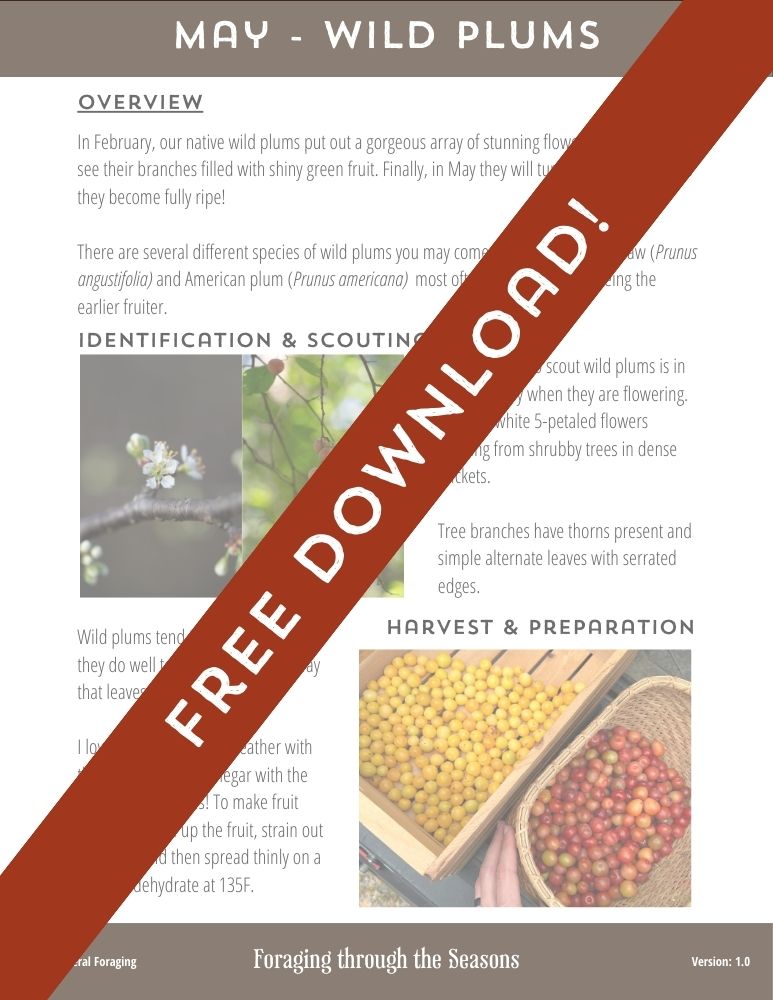
Get my foraging guide!
Learn an amazing wild food for each month of the year with my guide, Foraging through the Seasons!
Enter your email below to have this FREE guide sent straight to your inbox!
How to find black walnut
Black walnuts are widespread and easy to find trees if you know when and where to look for them!
Where to look
Black walnut thrives in rich soils. It is commonly found in loamy forest areas, creeksides, and other riparian zones.
Black walnut will produce nuts far more productively in open areas compared to deep in a forest.
If you’re looking for nuts to forage, some of the best locations are forest and creek edges, parks, and even neighborhoods.
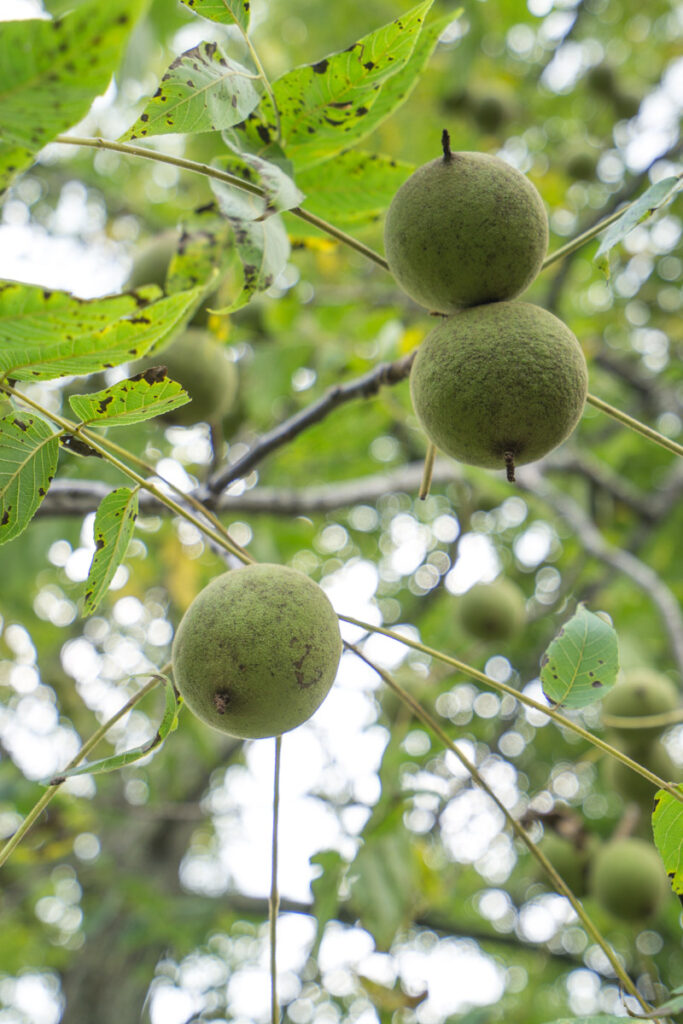
When to find nuts
Black walnut nuts generally ripen around mid-Autumn and can persist through early winter.
They are definitely easiest to find when they are ripe, as they’re quite easy to spot among the hundreds of nuts that have fallen to the ground.
You can find the timing window for black walnut and dozens of other wild foods in my Interactive Forager’s Calendar.
Range and distribution
Black walnut grows throughout Central and Eastern North America, reaching as far north as Michigan and as far south as northern Florida.
If you’re on the edge of its range, it is likely to grow just fine in the right conditions, as this tree is often limited more by its dispersal and competitive capability than its ecological compatibility.
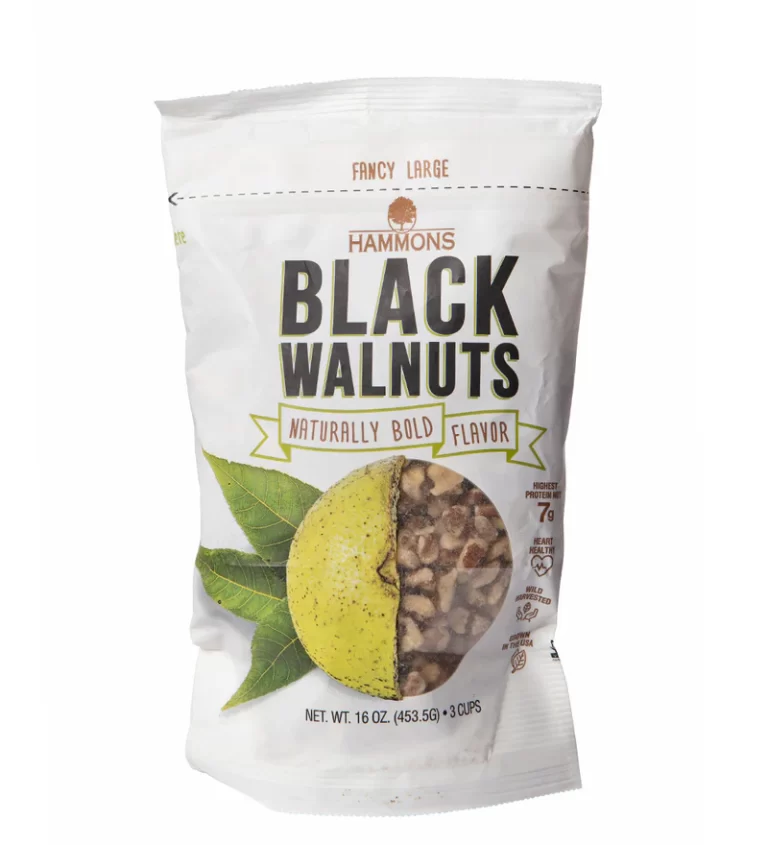
If you don’t live in the range of black walnut OR you just want to be able to try it’s bold rich flavor without having to go out and forage it yourself, you’re in luck!
With Hammons Black Walnuts, you can have wild-collected black walnuts shipped directly to your door step!
Hammons is an amazing American small-business that is bringing this amazing wild food into the mainstream.
I’m a huge supported of them and their work!
And you can use my code “feral” to get 10% off your order!
Gathering
You can gather hundreds of black walnuts with ease by just picking them up and throwing them into a bucket.
If you only have a hammer to crack them, before gathering a bunch of black walnuts, it’s important to test the nuts first. You want to look for wild nuts with thin husks to make cracking easier.
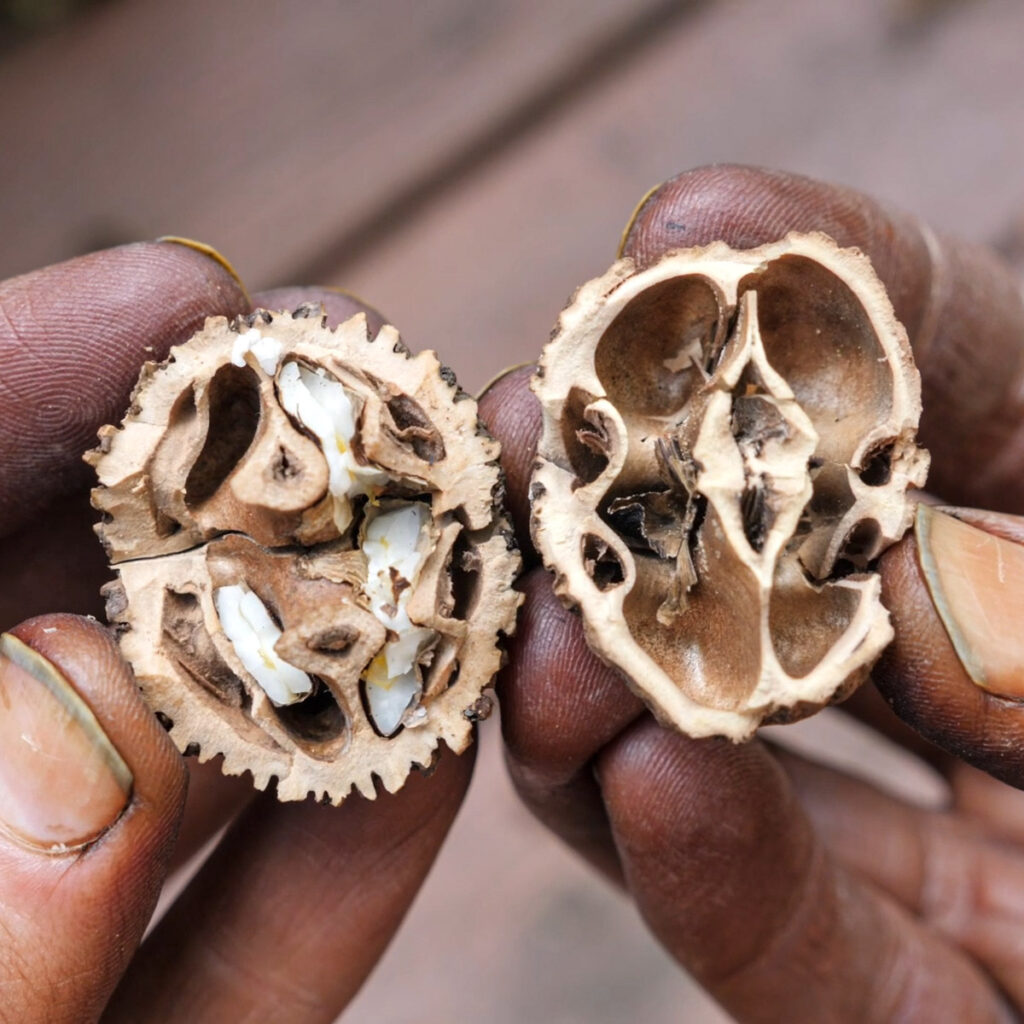
If you don’t want to worry about testing the nut thickness, I recommend you invest in a good-quality black walnut nutcracker like the Grandpa’s Goody Getter. I’ll discuss that a bit more in the cracking section.
With a nut roller like this one, you can gather thousands with ease!
However, the trick is that you then need to remove their hulls.
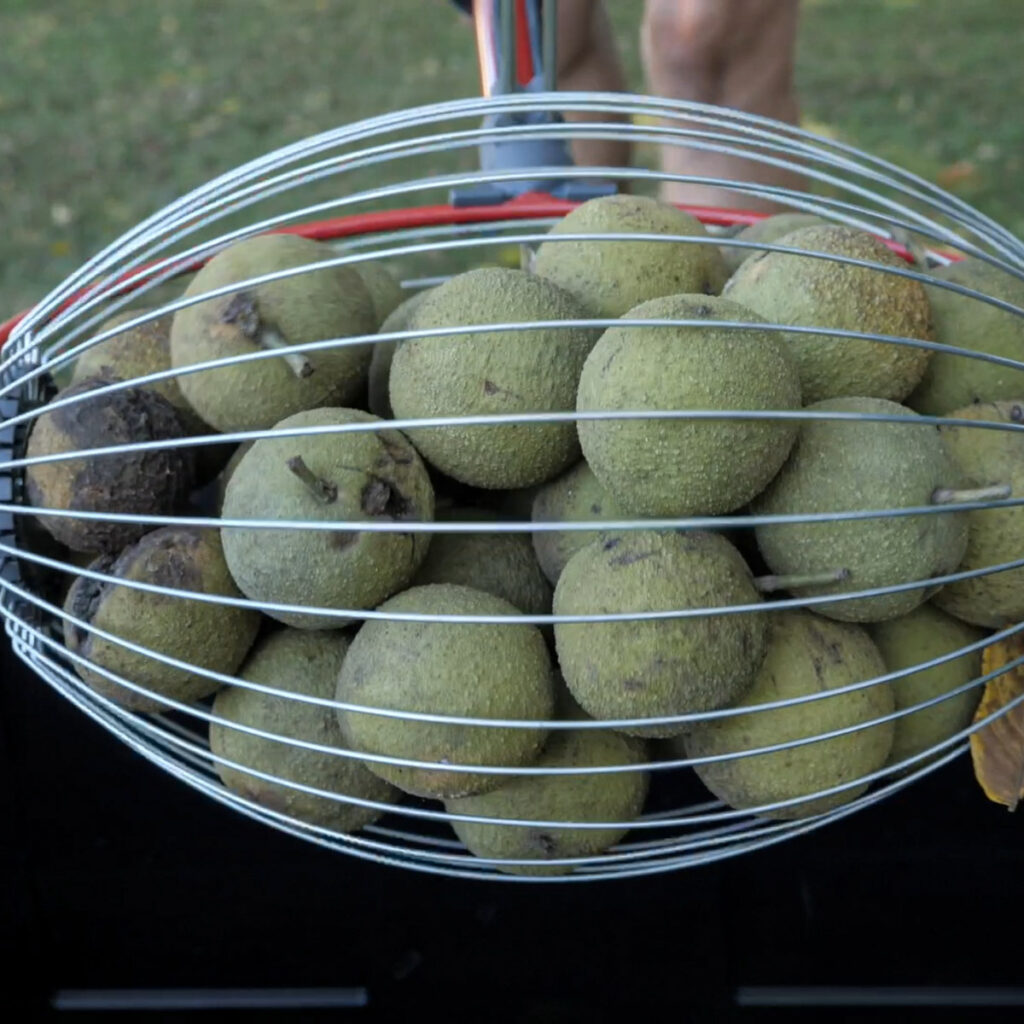
Cleaning (Hulling)
I’ll first show you a method that doesn’t require any power equipment at all, then a far better one that utilizes a small tool!
Cleaning black walnuts is when people will tell you silly things like “run them over with your car.”
Trust me, there are far better uses of your time.
The old “car” trick requires far more effort than it is worth, and it often results in cracks in the shells of the nuts, which cause them to spoil in storage.
The Stomping Method
If you don’t have any tools, just stomp them!
This works best with two people. One person stomps the hulls, and another follows behind, throwing the de-hulled shells into a bucket.
The simplest stomper is your foot! However, with the number of black walnuts that I gather, I like to use a long stick with a flat bottom to save my thighs!
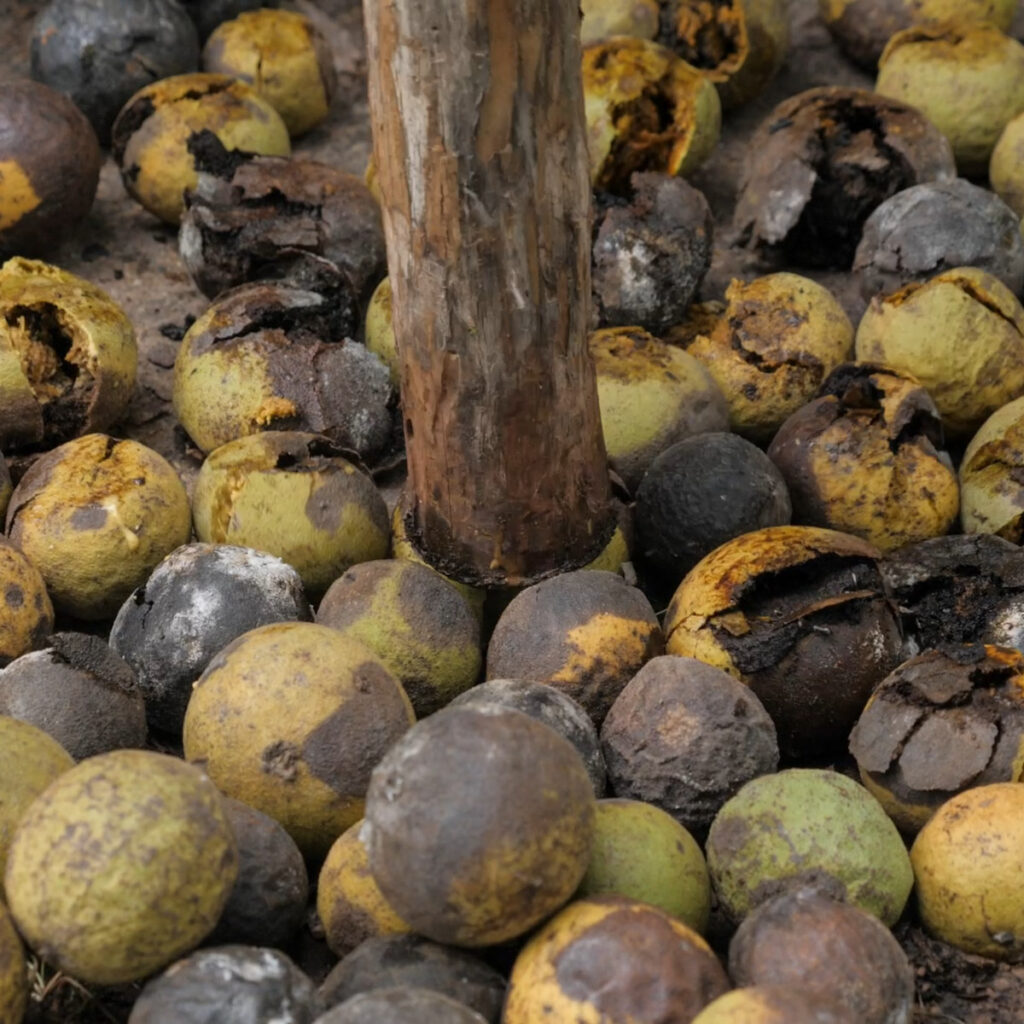
The Mud Mixer Method
The fastest way to clean black walnuts is with a 55-gallon garbage bin, water, and a mud mixer, particularly this mud mixer (I’ve tested half a dozen of them).
You want to use a corded drill for this task. You don’t need a super high-powered drill. This is the one that I use, and I haven’t had any issues with it!

But wait, there's more!
I’ve made a ridiculously detailed workflow guide for gathering and cleaning black walnuts that you can get for FREE delivered straight to your inbox.
Just enter your email below!
Curing
Once you have cleaned all your black walnuts, you must cure them. To do this, leave them out in a dry, well-ventilated area to begin to lose their moisture.
Don’t skip this. Curing allows several things:
- Improves the flavor
- Allows nuts to be stored long-term in-shell
- Makes cracking much easier
I use these seafood bags with hooks and hang them to dry to cure my black walnuts!
Note: The hooks aren’t strong enough to hold the number of nuts I need to cure, so I wrapped them with duct tape to strengthen them!
I leave my black walnuts to cure for at least 3 weeks and usually 6 weeks. You can crack them or store them in a well-ventilated area any time after that window.
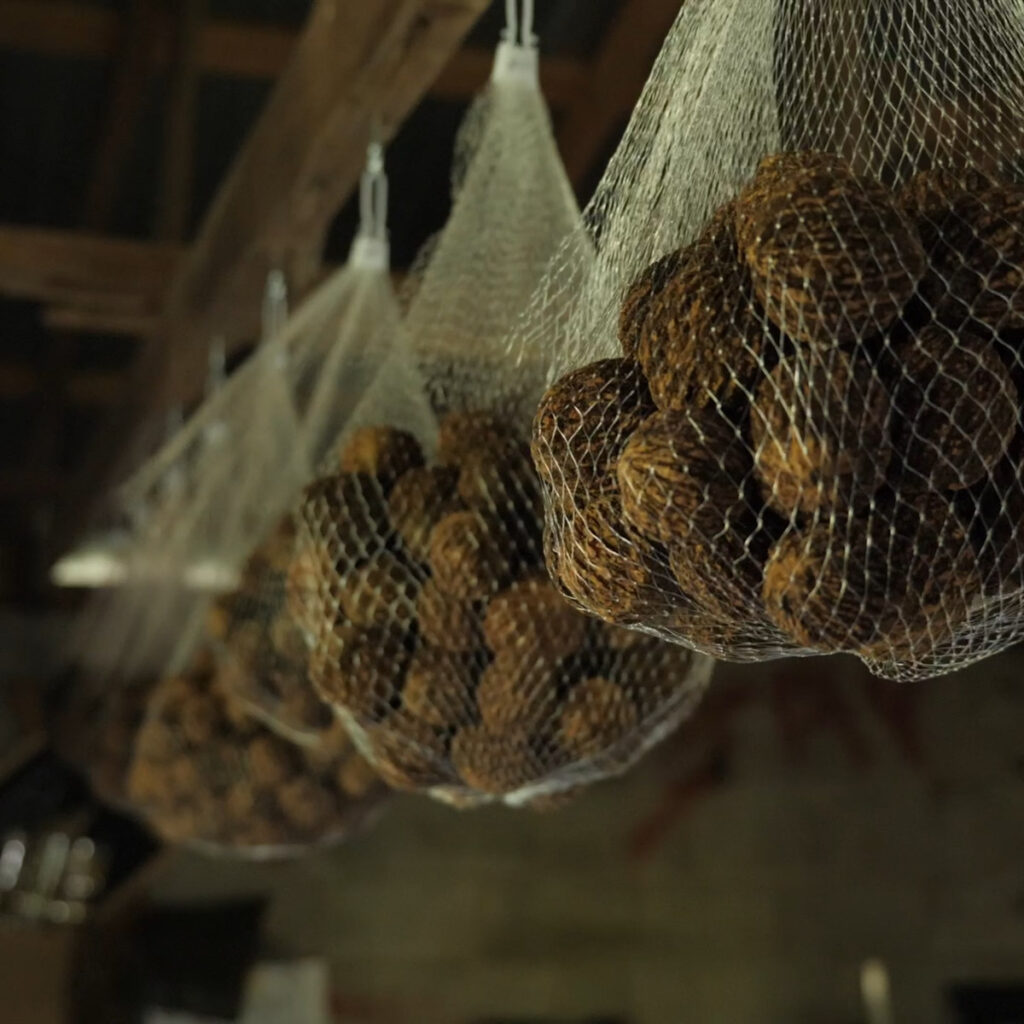
Processing
Now, we move on to processing black walnuts. If you’re only gathering around a dozen walnuts, I’ll be honest: it may not be worth your time.
However, if you gather at least a few dozen, it is definitely worth your time.
Once you get into the hundreds of nuts territory, you’ll be dealing with one of the most efficient wild foods to process out there! (If you follow my methods)
I will make this super efficient for you!
This method starts after we have cleaned and cured our black walnuts.
How to crack black walnuts
As I mentioned earlier, if you were able to find wild, thin-shelled walnuts, then a hammer will work just fine.
However, in my experience, the vast majority are not that thin-shelled. Therefore, a dedicated black walnut cracker is a vital tool for every forager!
You cannot do any better than Grandpa’s Goody Getter Black Walnut Cracker.
The Goody Getter Nutcracker is made in America by an American small business and is exceptionally well-built.
You’ll be able to pass this tool on for generations!
Yes, it’s a minor investment, but you will quickly make all your money back in the efficiency of cracking your nuts.
You can buy them here. Use my code, “feral24“, to get $10 off your order!
Pro Tip: Soak Your Nuts!
I know this sounds strange, but hear me out.
If you soak your black walnuts for 24-72 hours before cracking them, the nuts and shells will become more pliable.
This means:
- You won’t have shell fragments exploding everywhere on you.
- Nut meat pieces stay more intact.
Using this trick, I regularly obtain whole nut halves, which was never possible before I learned about soaking nuts.
Try it out, and let me know how it goes!
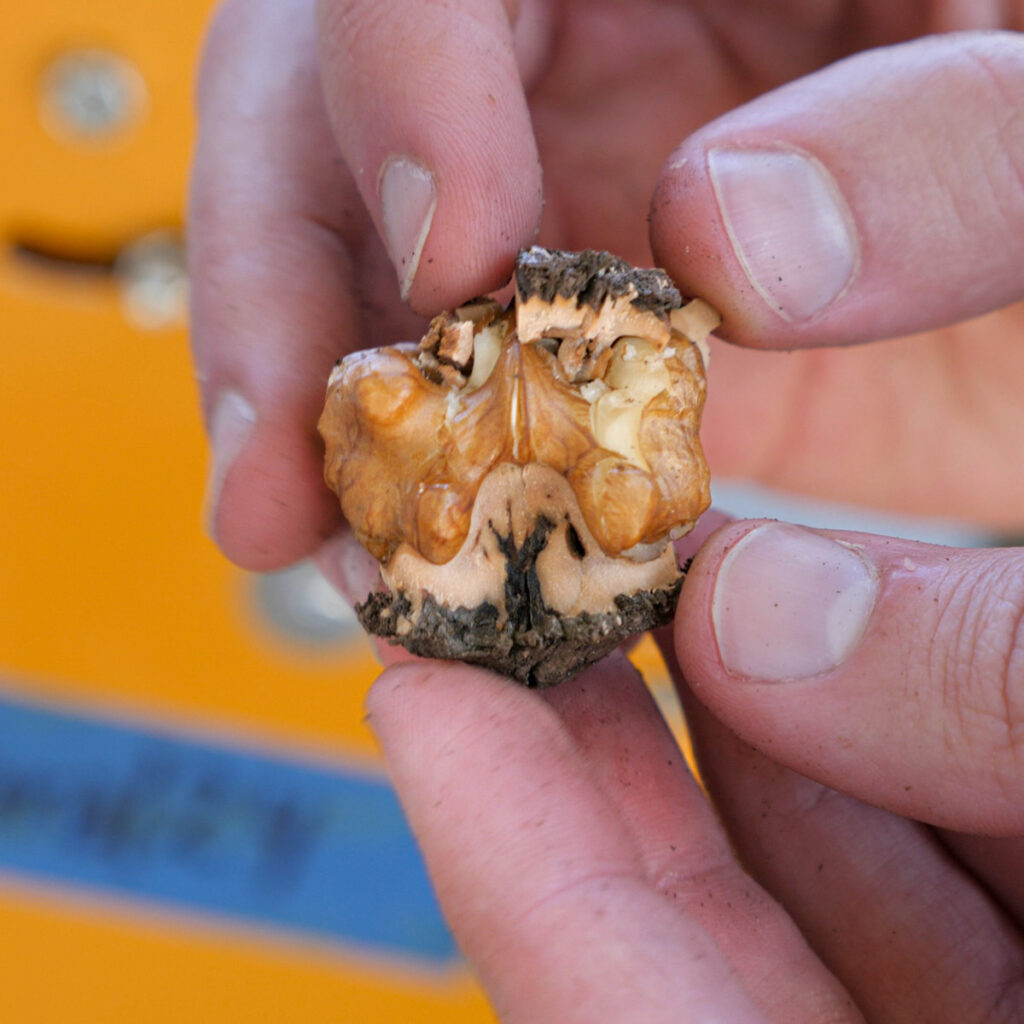
Sorting
Once you’ve cracked all your black walnuts, you’ll have a big pile of shells and nut meat. Again, you can sort through them one by one by hand, but for the amounts that I do, this is not feasible.
Your job will be ten times easier with just two steps:
- Use a set of my foraging filters to sort the pieces by size.
- Swirl the water to separate nuts from shells!
I call this the water swirl method. It changed my life!
Both the nut meat and shells sink, but the nut meat is light enough that swirling the water keeps them suspended for much longer!
If you do this, you can sort 95% of the shells and nut meat in minutes. The final few pieces can be done by hand.
For more details, check out my videos on Feral Foraging YouTube channel. Search “black walnut” for demos of all these processes!
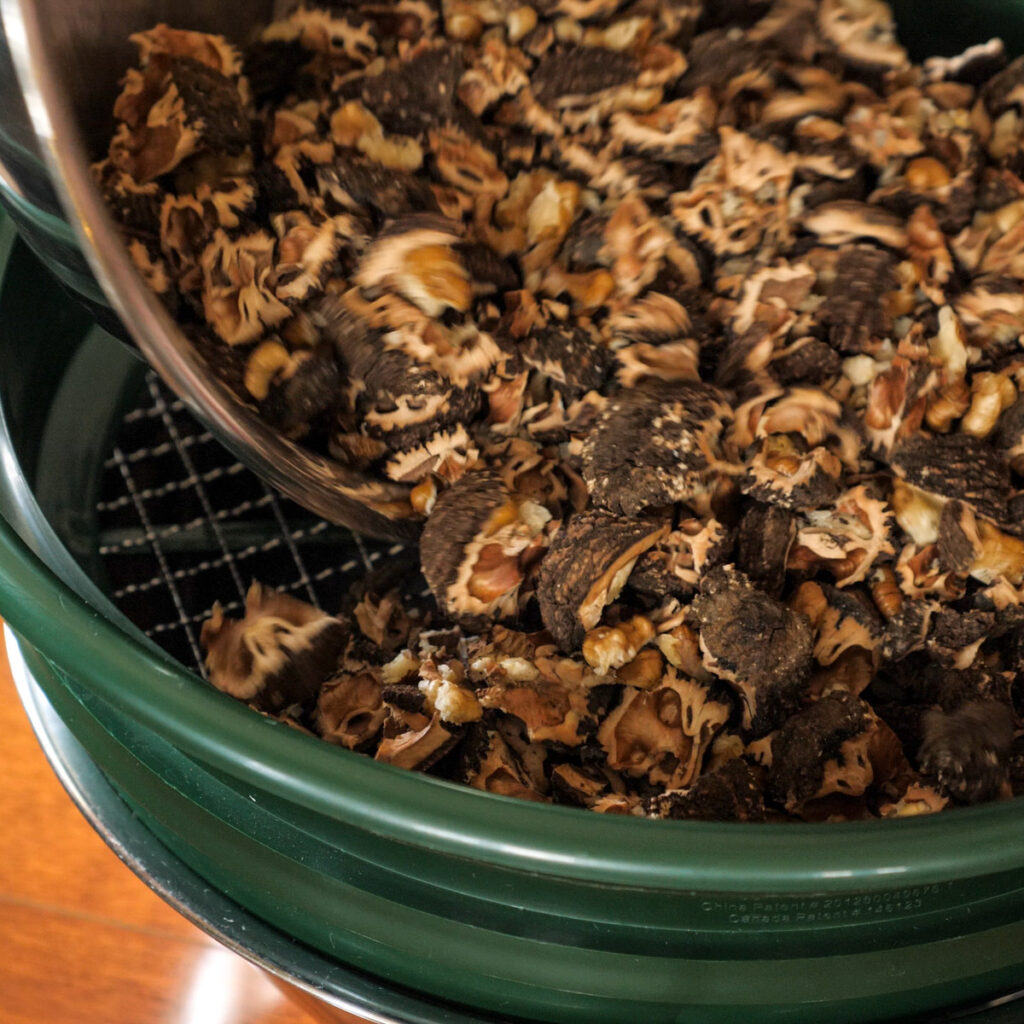
Medicinal benefits
According to Native American Ethnobotany (Moerman, 2009), black walnut had several medicinal uses, including treatments for ringworm, sores, and more.
People often think of using the hulls, but the inner bark, root bark, and even leaves are mentioned more frequently in traditional remedies.
King’s American Dispensatory (Felter & Lloyd, 1905) focuses more on black walnut’s cousin, butternut (Juglans cinerea), describing medicinal uses of the root bark as a cathartic and for other conditions.
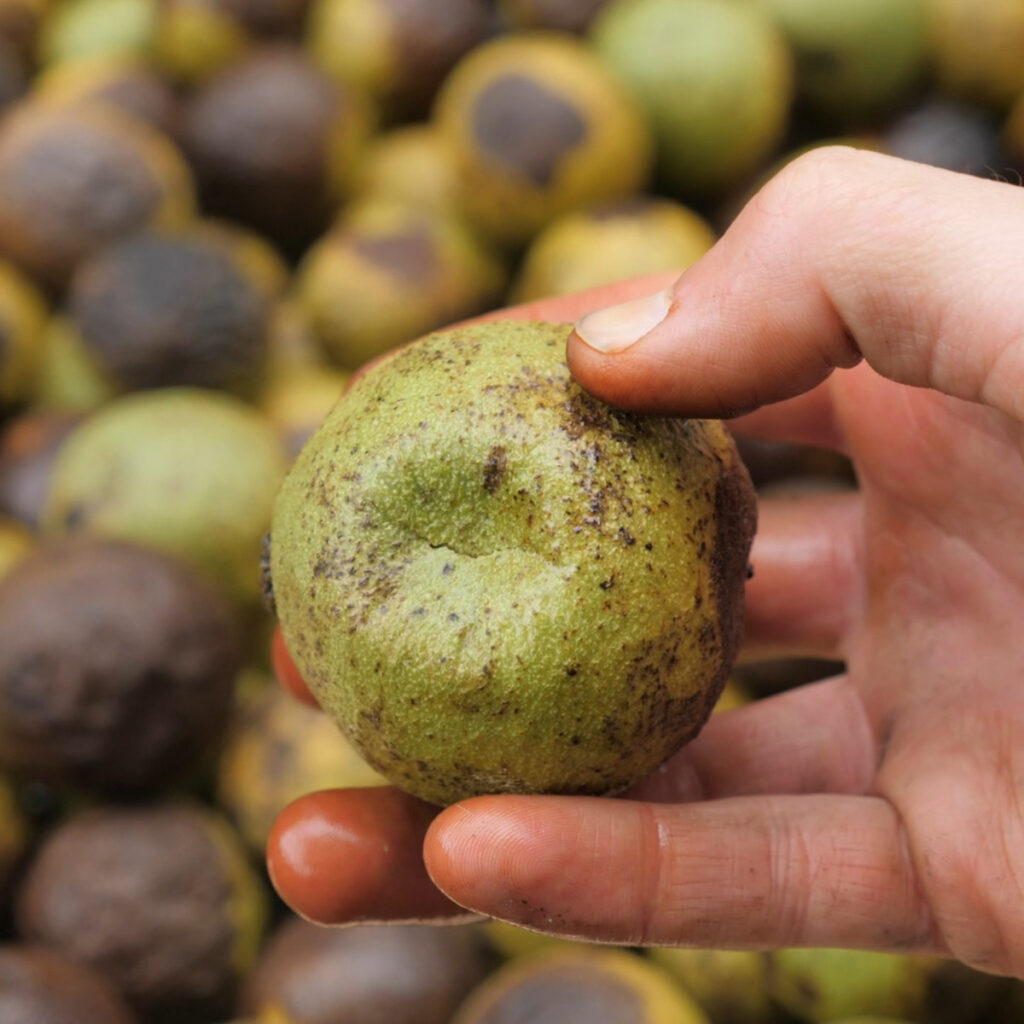
Cooking with black walnuts
There is a variety of ways to cook with and enjoy black walnuts. As I mentioned at the beginning, I think they shine the best when used in desserts!
Below is one of my favorite recipes to incorporate them into.
American Persimmon Pudding with Black Walnut
Ingredients
- 2 cups persimmon pulp Wild american persimmon or imported persimmon from grocery store
- 1 cup brown sugar
- 2 large eggs
- 1½ cups all-purpose flour
- 1 cup milk
- 2 tbsp melted butter
- 1 tsp baking powder
- 1 tsp baking soda
- 1 tsp vanilla extract
- ½ tsp cinnamon or to taste
- Pinch salt
- ¼ cup chopped black walnuts Optional: sub black walnuts for raisins, hickory nuts, etc
Instructions
- Preheat oven to 350°F (175°C).
- In a large mixing bowl, combine the persimmon pulp, brown sugar, eggs, milk, melted butter, and vanilla extract. Mix until smooth.
- In a separate bowl, whisk together the flour, baking powder, baking soda, cinnamon, and salt.
- Gradually add the dry mixture to the wet ingredients, stirring until just combined. Do not overmix. If using additions, gently fold them in at this stage.
- Grease a 9-inch baking dish or pie dish with butter or non-stick spray. Pour the batter into the prepared dish and spread it evenly. (If using black walnuts, don't add them on top)
- Bake for 35–40 minutes, or until a crust forms on the top. The center should remain slightly wobbly but not runny.
- Remove from the oven and let it cool before serving. Serve warm, at room temperature, or chilled. Reheat leftovers in the microwave, if desired.
Notes
Closing thoughts
Black walnut is one of the most incredible wild foods in Central and Eastern North America.
I think a lot of people pass it up because they believe it will take too much work.
I hope that people will learn through the new methods in this article that foraging and processing black walnut is more than worth it!
If you enjoyed the article, please share it with a friend.
Thank you for reading!
